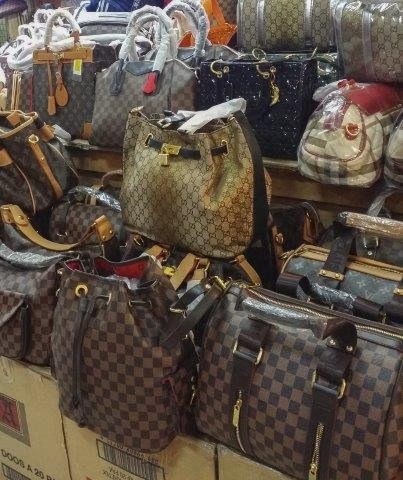Feb 7 2019
Finding out that the new designer gold watch or handbag is a fake is costly and infuriating, and it could be much worse with counterfeit medical devices or drugs. But apparently, as soon as manufacturers formulate a new technique to ensure product authenticity, counterfeiters discover a way to outfox it. Now, scientists have developed an “unclonable” tag that can never be duplicated, even by the manufacturer. They publish their results in ACS Applied Materials & Interfaces.
 An “unclonable” tag that cannot be replicated was developed to combat counterfeit goods. (Image credit: Ahmad Faizal Yahya/Shutterstock.com)
An “unclonable” tag that cannot be replicated was developed to combat counterfeit goods. (Image credit: Ahmad Faizal Yahya/Shutterstock.com)
Annually, billions of dollars are lost because of fake goods. These knock-offs, usually of inferior quality, frequently appear as luxury brands. Manufacturers have tried to include bar codes or unique tags on their products so that consumers and store owners can confirm a product’s genuineness, but counterfeiters mostly learn a way to copy these. Riikka Arppe-Tabbara, Mohammad Tabbara, and Thomas Just Sørensen aimed to design an authentication system with physical unclonable functions (PUFs)––tags based on random processes that are impossible to reproduce. As they describe in their report, an example of a PUF would be throwing some sand on a surface. Each throw produces a random pattern that cannot be replicated.
To create their anti-counterfeiting system, QR codes were laser-printed on a paper and then the PUF pattern was sprayed on its surface. The PUF inks were composed of microparticles, which formed random patterns that appeared as white spots on a black background when magnified. To demonstrate their system, the team produced 10,000 tags and imaged them using a smartphone camera to establish a registry. Then, they re-imaged the tags with other smartphone readers and attempted to match them to the registry. The system perfectly identified 76% of the PUF tags. None of the tags were identified erroneously, but a few codes that were out-of-focus or dirty needed an extra scan. The scientists estimate that the system can produce 2.5×10120 unique codes.
The researchers received funding from the Villum Fonden and the University of Copenhagen Proof-of-Concept Program.